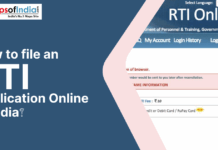The Unique Identification Authority of India (UIDAI)
The UIDAI, established by the UPA-2 Government in 2009 to propagate the Aadhar card program, which is proposed to tag every citizen of India with a 12-digit Unique Identification (UID) number, primarily on the basis of biometric data and other parameters like photograph and residential address proof. The data-bank thus generated is under the direct supervision of the UIDAI, which incidentally, does not have any legal status as of now. It is to be mentioned here that the data collection for the Aadhar program is supposedly the world’s largest biometric data collection program, devoid of any protection laws for safeguarding privacy.
The Supreme Court verdict goes against the Aadhar program
The judicial hammer of the Supreme Court pulverized the Central Government’s ambitious scheme of converting the Aadhar card program, the pet project of the Unique Identification Authority of India, as mandatory for availing Government’s beneficiary schemes and other necessary services. The verdict issued on September 24, 2013 by the Bench of Justices was one and unanimous: Aadhar card cannot be a compulsory document for realizing Government-provided benefits and services that an ordinary citizen of India is constitutionally entitled to. The Apex Court also clarified the voluntary nature of enrollment under the Aadhar card program. The verdict came as a consequence of the submission of a number of pleas against the policies of certain states making Aadhar card a mandatory document for availing various amenities, inclusive of provident fund realization and marriage and property registration. The Apex Court Bench, chaired by Justice B. S. Chauhan, emphatically underlined the drawbacks of the proposed idea, “UID number should not be necessary for essential services such as gas connection, vehicle registration, scholarships, marriage registration, salaries and provident fund.”
The Supreme Court also addressed the issue of indiscriminate allocation of Aadhar cards to a considerable number of illicit immigrants from Bangladesh, which directly concerns national security. Ensuing this hearing of the Supreme Court, another hearing followed on October 8, 2013 as a result of several petitions filed against the efforts of Government to make the Aadhar card and the UID number mandatory for the citizens of India, inclusive of the Government petition to reconsider the earlier verdict and petitions from the oil PSUs such as HPCL, IOCL and BPCL. The Apex Court refused to budge from its earlier verdict, and made it clear that no further pleas regarding the revision of the earlier verdict on behalf of the Government will be considered by the Court. The Supreme Court, however, promised the Government to announce a date for a further hearing on the Aadhar card Issue.
The controversial nature of the Aadhar card
The UPA-2 Government’s efforts to force the Government beneficiary schemes like the Janani Suraksha Yojna, scholarships, pensions, MNERGA, PDS, and even LPG subscriptions, under the mandatory umbrella of the Aadhar card, were effectively thwarted by the Supreme Court.
The whole concept of the Aadhar card is full of holes, some of which are discussed below:
- The Aadhar card for a particular individual is issued on the basis of biometric parameters like the iris scan and the fingerprint. While the UIDAI does not have qualified personnel who can handle such tests, the said body has hired external agencies and NGOs to conduct the same. The voluminous data generated as a result of such tests are in the direct access of the said external agencies and there are no guarantees of protection for such sensitive data.
- The biometric parameters of iris scan and fingerprinting are viable only when an individual is operating in a high-security zone. As such, their inclusion in the Aadhar card is merely an exaggeration. Assuming the UPA-2 Government achieves the voluntary enrollment of one-third of the population of India, i.e., 0.4 billion, the volume of data generated will be insurmountable. Our country does not have the necessary infrastructure to render adequate protection to such a huge and sensitive data-bank from abusage by external agents. Besides, with the raging corruption that has permeated every strata of the country, what certainty is there that the State itself will not misappropriate the available database? All these factors put the Aadhar card-holders as well as the National security in a precarious position.
- The current creaky infrastructure, backed by ancient technologies that are presently handling the database, is prone to severe errors. Any such error will detain an Aadhar card holder for an uncertain period, which may even result in a possible exclusion of the said individual.
- The policy of the UIDIA that a valid Aadhar card holder can introduce another individual, who then becomes entitled to possess an Aadhar card, is also highly dubious. Using such loopholes, many illegal Bangladeshi immigrants are now in possession of legitimate Aadhar cards, which makes them bona fide citizens of India.
- As correctly pointed out by Montek Singh Ahluwalia, one of the chief policymakers in the Prime Minister’s office, the Aadhar card cannot pass as a document, establishing identification of an Indian citizen. What exact purpose, then, does the card or the UID number serve?
The actions of the UIDAI after the Supreme Court Verdict
The Chairman of UIDAI, Nandan Nilekani, proudly announced the enrollment of 380 million Indian citizens, (out of a total population of 1.2 billion), in a statement delivered in Washington on April 23, 2013, and his aspirations of touching 600 million by 2014. The Chief Minister of Delhi, Sheila Dikhshit, echoed a similar sentiment during her announcement on September 23, 2013, of a near-100% enrollment under the Aadhar program in Delhi. The UPA-2 Government is determined to push forward with the Aadhar program despite the Supreme Court verdict setback. The Government is now mulling over the passing of National Identification Authority of India Bill, which will not only give UIDAI a legal backing, but also empower it with an authoritative status. As of October 8, 2013, sources confirmed the sanction of the said bill by the Union Cabinet due to be submitted before the Parliament during the winter session.
Conclusion
The attempts of the UPA-2 Government of trying to make the Aadhar card and the UID number into a kind of mandatory domestic passport, can at best be described as atrocious and unconstitutional. Besides, the verdict of the Apex court has punched a big hole in the Government’s aspirations of conjoining the Aadhar program with the Government-provided benefits and subsidies. It is to be mentioned here that the oil ministry, in a statement issued on October 9, 2013, has negated the mandatory status of the Aadhar card to avail Government subsidies on LPG cylinders. In my personal opinion, the whole Aadhar program is much ado about nothing and a miserable emulation of the Social Security Number concept of the US.
Except legitimizing a considerable number of illegal immigrants from Bangladesh, the Aadhar program so far has achieved nothing. With the currently-imposed strictures on issuance of Indian passport, and the existence of the Voter Identification card, the Aadhar program is an unnecessary elaboration. Isn’t it absurd that a bona fide citizen of India, in possession of a valid Voter Identification card, and probably a valid Indian passport too, needs to be fingerprinted for getting a mere subsidy on an LPG cylinder?
Recent Developments
The Supreme Court of India made a judgment stating that Adhar card will only be optional for availing different government welfare schemes. It also said that the card will be used for foodgrains, public distribution scheme, LPG or kerosene but not be mandatory for government schemes.
Read More:
How to Apply for Passport Online?



